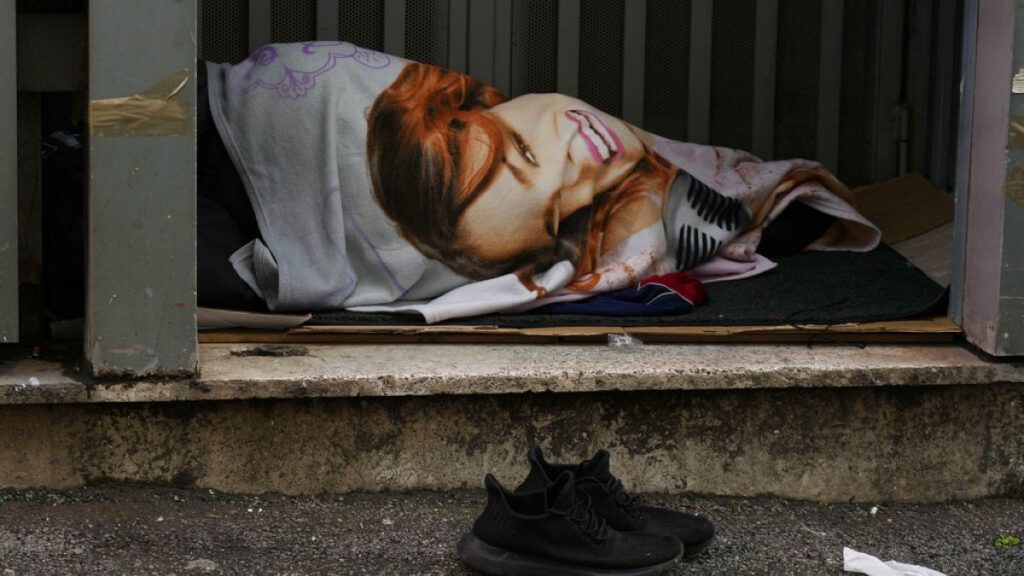The city of Rome is grappling with a significant homelessness crisis, despite official pronouncements downplaying the issue. While the city council allocated €4.3 million for four large tented shelters intended to provide temporary housing for the homeless during the winter months, only two were operational as of late 2024. These two shelters, located near Termini and Ostiense train stations, offer a combined capacity of approximately 250 beds, a mere fraction of the estimated homeless population. Mayor Roberto Gualtieri has assured the public that the remaining two shelters will be erected by the 2025 Jubilee, but the delays raise concerns about the city’s ability to address the immediate needs of its vulnerable population. Furthermore, even with all four shelters operational, the limited number of beds underscores the inadequacy of the current strategy to effectively tackle the scale of homelessness in Rome. The chosen locations near major transportation hubs also indicate a focus on managing the visibility of homelessness rather than addressing its root causes.
The discrepancy between official statements and the reality on the ground is stark. While city officials claim there is no homelessness emergency in Rome, data from various sources paint a different picture. The “Night of Solidarity” initiative, conducted in April 2024, counted over 2,200 homeless individuals in the city, primarily concentrated around transportation hubs and tourist areas. This count, though likely an underestimation of the true figures, already highlights a significant need for shelter and support services. Furthermore, data from the National Institute of Statistics (ISTAT) from late 2022 estimated over 22,000 homeless individuals in Rome alone, making it the Italian city with the highest concentration of homelessness. This stark contrast between official pronouncements and statistical evidence raises concerns about the city’s commitment to acknowledging and addressing the true scope of the problem.
The limited capacity of the planned shelters and the delayed implementation raise serious concerns about the city’s ability to provide adequate support to its homeless population, especially during the harsh winter months. Councillor Barbara Funari has stated plans to expand the city’s reception capacity by 250 spaces annually, aiming for 2,000 spaces by 2026, focusing on second-stage accommodation in flats and smaller units. However, this long-term strategy does little to address the immediate needs of those currently living on the streets. The focus on second-stage accommodation also implies a lack of attention to the immediate needs of those requiring first-stage emergency shelter, highlighting a potential gap in the city’s support system.
The broader context of rising poverty in Italy further complicates the situation. The 2024 Caritas Poverty Report revealed that almost 10% of the Italian population, roughly 5.7 million people, live in absolute poverty. This widespread economic hardship contributes to the growing number of homeless individuals, highlighting the need for comprehensive social programs and economic policies to address the root causes of poverty and homelessness. The multidimensional nature of poverty, encompassing not only economic hardship but also limited access to housing, healthcare, and education, underscores the complex challenges facing vulnerable populations and the need for a multi-pronged approach to address their needs.
Rome is not alone in its struggle with homelessness. The ISTAT data from 2021 reveals that nearly 100,000 homeless individuals were counted across Italy, with 50% concentrated in just six municipalities, including Rome, Milan, Naples, Turin, Genoa, and Foggia. This concentration of homelessness in major urban centers highlights the need for national strategies and inter-city collaboration to address the issue effectively. The European Parliament’s call for EU Member States to end homelessness by 2030 and to allocate more funds towards this goal underscores the urgency of the situation and the need for coordinated efforts across the continent. The suggested framework of national strategies should address not only emergency shelter but also preventative measures and long-term solutions such as affordable housing initiatives.
The situation in Rome exemplifies the larger challenge facing European cities in addressing homelessness. The gap between the official narrative and the stark reality on the ground highlights the need for greater transparency and a more proactive approach to addressing the root causes of homelessness. The limited capacity of the current shelter program, combined with the rising rates of poverty, underscores the urgent need for a comprehensive strategy that includes both short-term emergency measures and long-term solutions focused on affordable housing, social support, and economic opportunity. The European Parliament’s call for a pan-European effort to end homelessness by 2030 provides a framework for action, but ultimately, the success of such initiatives depends on the commitment of individual member states and their cities to prioritize the needs of their most vulnerable populations.














